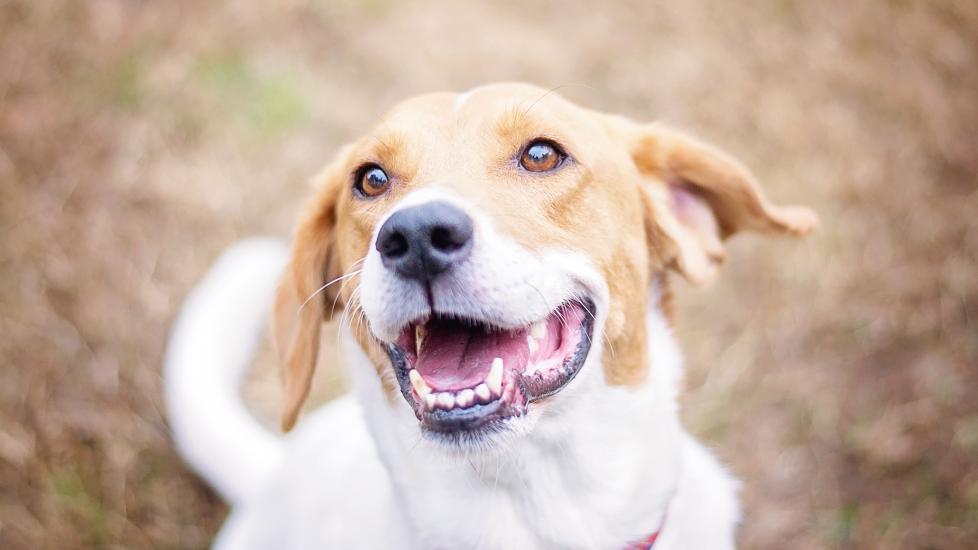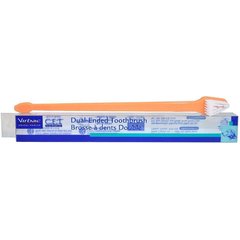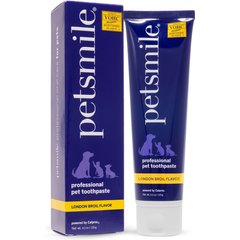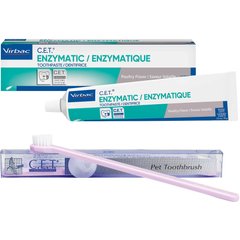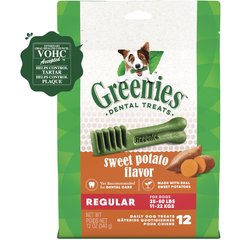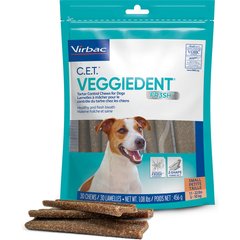How Many Teeth Do Dogs Have, and Can They Lose Them?
DemureDragonfly/iStock / Getty Images Plus via Getty Images
Do dogs have the same number of teeth as we do? And do they lose their puppy teeth just like we lose our baby teeth? Here’s a breakdown of how many teeth dogs have as puppies and adults, and whether it’s normal for dogs to lose their teeth.
How Many Teeth Do Dogs Have?

Adult dogs have 42 permanent teeth, but the number of teeth in a dog’s mouth changes as they grow.
The age of eruption of permanent teeth in dogs is between 3–7 months of age. Their upper jaw, called the maxilla, has 20 teeth. A dog’s lower jaw, called the mandible, has 22 teeth. In total, dogs have more teeth than we do (humans have 32 teeth).
How Many Teeth Do Puppies Have?

Puppies are born without teeth, and it’s not until they are 3–4 weeks old that their puppy teeth start to erupt. By 3–5 months of age, they will usually have all 28 of their puppy teeth. However, some dogs (particularly toy and small breed dogs) tend to take longer to develop puppy and adult teeth.
Types of Dog Teeth

Each type of dog tooth—incisor, canine, premolar and molar—serves its own function. Here’s a breakdown of what each type of dog tooth does and where these teeth are located:
Incisors
The teeth in the front of a dog’s mouth are called incisors. The top and bottom jaw have six incisors. Dogs use their incisors mostly to grab objects, like food, but they are also used for scraping or nibbling food and grooming as well.
Canines
The canine teeth are the longest teeth in the front of the mouth. Dogs have four canines teeth, and the canines are well-developed and slightly curved to better tear or puncture objects and food.
Premolars
Just behind the canines are the premolars. Adult dogs have 16 premolars—eight on the top jaw and eight on the bottom jaw. These chewing teeth are used for shearing through and grinding up food.
Molars
Molars are the teeth in the back of a dog’s mouth. They can look a lot like premolars. There are four molars on the top jaw and six on the lower jaw. Molars are used for grinding or chewing food into small pieces to make it easy to swallow and digest.
Can Dogs Lose Teeth?
Puppies typically begin losing their teeth when they’re 3–4 months old, when their larger adult teeth start growing in.
However, aside from the transition from puppy teeth to adult teeth, it is not normal for a dog to lose teeth. If you notice your dog is losing their adult teeth, call your veterinarian. Adult dogs losing teeth is a sign that something is wrong.
Here are the most common reasons for a dog to lose their adult teeth:
Periodontal Disease
The most common reason for a dog to lose teeth is because of advanced periodontal (dental) disease in their mouth. Without proper dental care, like at-home brushing and veterinary dental cleanings, periodontal disease leads to diseased gums and decaying teeth.
The natural process that your dog’s body goes through to reject a decaying tooth is uncomfortable and painful. And in severe cases, it can lead to life-threatening infection.
Dental disease has further been associated with systemic effects on organs including the heart, liver, and kidneys. The bacteria in a dog’s mouth can result in infections elsewhere in the body if they become severe.
To help keep periodontal disease at bay, use a vet-recommended dog toothbrush and dog toothpaste (not toothpaste for humans) and brush your dog's teeth daily.
Trauma
Your dog’s teeth can be lost through trauma, whether it’s caused by chewing something inappropriate or if they sustain an injury to their mouth. Some of the most common items that can cause fractures or loss of teeth are made from dense mineral or bone material.
To protect your dog’s teeth, it is best to avoid giving your dog things such as beef bones or pork bones, as this material can be too hard and commonly results in fractures and tooth damage. Instead, consider dental chews or treats for your pup.
Tooth Decay
Dogs’ teeth are prone to decay and wear-and-tear at a much faster rate than our own, which is partly because they use their mouths for more than just eating and drinking.
Dogs use their teeth to pick up, carry, and chew items. In addition, a lot of items pass through a dog’s mouth, like slobbery toys, hair, dirt, feces, and food. All of this can take a toll on the health of their teeth.
Some dogs (especially small breed dogs and Greyhounds) experience tooth decay at an extraordinarily fast rate, potentially requiring many teeth to be extracted (removed) by a vet throughout their lifetime.
To treat decayed teeth, your vet will likely recommend a professional cleaning be done under general anesthesia with the extraction of any diseased teeth. This is a very common procedure for animal hospitals.
A dog’s mouth is much more comfortable when decaying teeth are removed. Dogs can even eat perfectly well without teeth, if needed.
How To Prevent Tooth Loss in Dogs
Keeping your pet’s mouth healthy is important to their overall health and quality of life. If you notice that your dog is losing teeth, has loose or wiggly teeth, or has progressively worsening breath, set up a consultation with a veterinarian as soon as possible.
Don’t wait until your pet is not eating to get a dental consult with your veterinarian. Use your pet’s annual exam as an opportunity to discuss your dog’s teeth and overall dental health before there’s a problem.
Dog Teeth FAQs
Do dogs have wisdom teeth?
No. Dogs, unlike humans, do not have wisdom teeth.
Are dogs born with teeth?
No. Puppies are not born with visible teeth. Instead, their baby (deciduous) teeth will erupt between 3–4 weeks of age.
How many teeth do small dogs have?
Small dogs have 42 teeth. All adult dogs, regardless of size, have 42 permanent teeth—20 on the top and 22 on the bottom.
What are retained teeth?
When puppy teeth do not fall out on their own and stay in your puppy’s mouth, they are called retained deciduous teeth. This is an issue that can lead to overcrowding, which can cause abnormal positioning of adult teeth and increased susceptibility to dental issues.
Retained deciduous teeth are generally viewed as a genetic problem. It can happen in any dog but is more likely in small breed dogs. Your veterinarian will likely recommend removal of these teeth surgically to prevent future problems.
